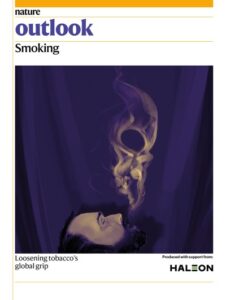How to combat misinformation through collaboration
These days my timeline and feeds are flooded with so much information; how can I know what's real and what's not?
Trusted sources, such as academic publishers, have a leading role to play here.
It’s becoming increasingly important for the key players to work together to combat the increasing spread of misinformation.
Even before this era of AI, with its reliability issues (laywer citing fake cases) and manipulation (e.g., deep fakes), misinformation seemed to be everywhere — from covid-19, vaccines, and election outcomes, to the war in Ukraine.

Defined as ‘information disseminated without a clear intent to deceive’, misinformation is contrasted with its more evil twin, disinformation, which is spread with the deliberate intent to mislead.
Misinformation and disinformation can cause decisions that are not in our best interests, or those of society. We might vote given incorrect information or believe that some diets or activities are okay when they are actually harmful to our health.
In many cases, the negative consequences are most starkly felt outside of North America and Western Europe. For example, in Myanmar, false information on Facebook may have facilitated genocide; and in India, at least two dozen people were killed in mob lynchings after rumours were spread on WhatsApp.
In the digital age, where information spreads faster than wildfire, and misleading content can have dire consequences, publishers and organizations have a unique opportunity to team up and fight this growing menace.
Understanding the Challenge
Misinformation is often fueled by sensationalism in the media and confirmation bias (our tendency to seek out, favor, and recall information that confirms our beliefs). It thrives in an environment where information consumption is rapid and unchecked.
The exponential growth of social media platforms and online content has provided a fertile ground for the spread of false narratives, fake news, and manipulated images. Indeed, one recent systematic review found misinformation in up to 50% of posts online to do with vaccines, and 30% in studies dealing with Covid-19.
Another lab-based study came to the eye-opening conclusion that just a few minutes of exposure to misinformation is enough to change someone’s behavior.
The low economic cost of producing “fake news” and the difficulty of verifying the credibility of information sources contribute to the scale of the problem.
Collaboration as the Cornerstone
To tackle the spread of misinformation, effective collaboration between government, industry, the media (including publishers such as Springer Nature), and tech industries is essential.
Indeed, at Springer Nature, we’ve long been pooling our expertise with third parties to amplify the reach of trustworthy science and health information.
One way we do this is through collaborating with organizations on content and events, via sponsored outlets such as Nature Outlook, as well as our academic conferences, and regional research portals.
 A recent Nature Outlook, sponsored by a health company, focused on the topic of smoking. The Outlook highlights that more than one in ten deaths is caused by tobacco smoking, and if current smoking patterns do not change, by the end of the twenty-first century, ten times as many people will have died from smoking as during the whole of the twentieth century. The Outlook also tells us that quitting at any age considerably reduces the risk of a smoking-related death, and quitting smoking before the age of 40 avoids more than 90% of the excess risk of death.
A recent Nature Outlook, sponsored by a health company, focused on the topic of smoking. The Outlook highlights that more than one in ten deaths is caused by tobacco smoking, and if current smoking patterns do not change, by the end of the twenty-first century, ten times as many people will have died from smoking as during the whole of the twentieth century. The Outlook also tells us that quitting at any age considerably reduces the risk of a smoking-related death, and quitting smoking before the age of 40 avoids more than 90% of the excess risk of death.
The Outlook is one small example of how publisher-industry cooperation can help counter misinformation; whether it’s a friend or social media post suggesting that “smoking isn’t really bad for you”.
Such trustworthy sources of information can help to “debunk” falsehoods that people have already been exposed to, and also “prebunk” a falsehood before an individual is exposed to it.
“Prebunking” and “inoculation theory” have established efficacy as a messaging strategy, particularly in the health domain. Inoculation theory suggests that, just as vaccines trigger the production of antibodies to provide immunity against future infection, the same can be achieved with information. By pre-emptively forewarning and exposing people to severely weakened doses of misinformation (coupled with strong refutations), people can develop cognitive resistance against future misinformation.
Other ways in which publishers and private-sector organizations might collaborate include (but are not limited to): strengthening fact-checking, promoting digital literacy globally, effectively and ethically utilizing technology, creating unified reporting systems, and establishing ethical guidelines, including for transparency. Many of these are already in development or implemented at Springer Nature.
The Highway Ahead
If publishers like Springer Nature and organizations can align their goals and resources, they can collectively reshape the information landscape to mitigate the flow of misinformation.
End-users of information — society at large — will of course benefit, but so too can organizations. Studies have shown that users are much more likely to engage with brands that advertise alongside trusted content. Where better than Springer Nature?
If your organization would like to collaborate on a sponsored content project or event, please talk to our team today.
